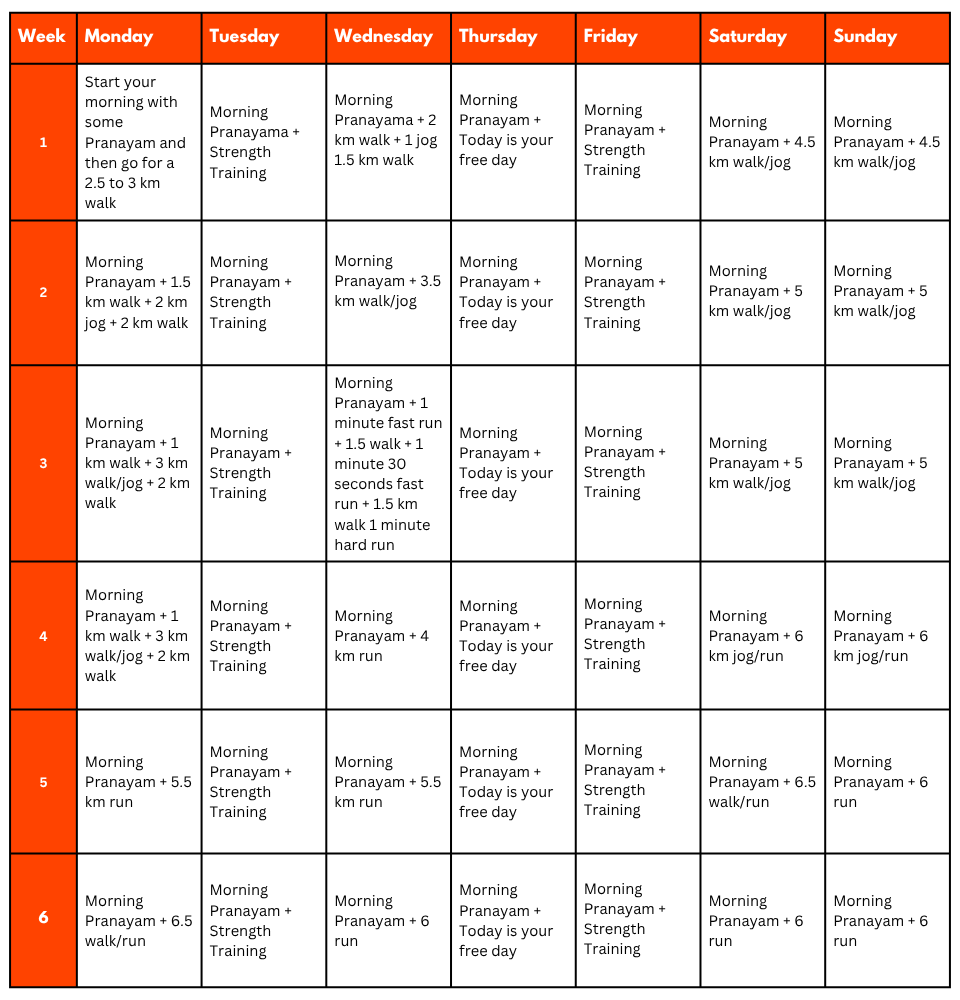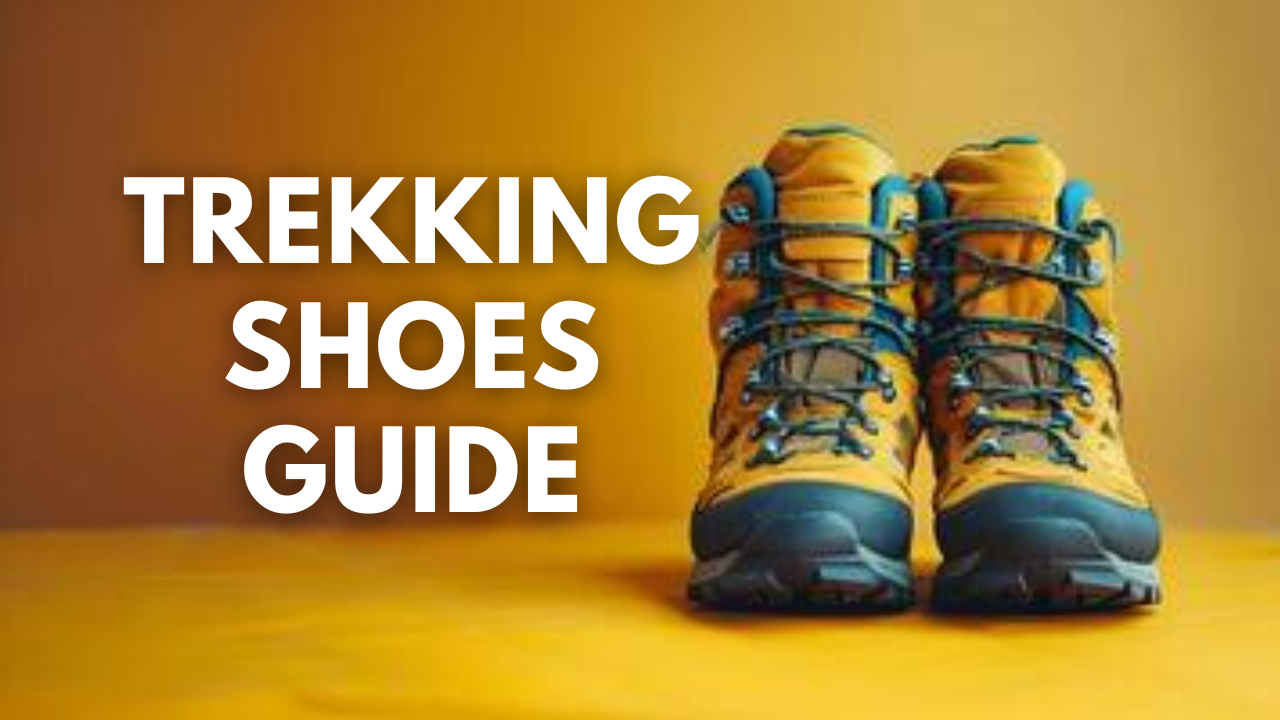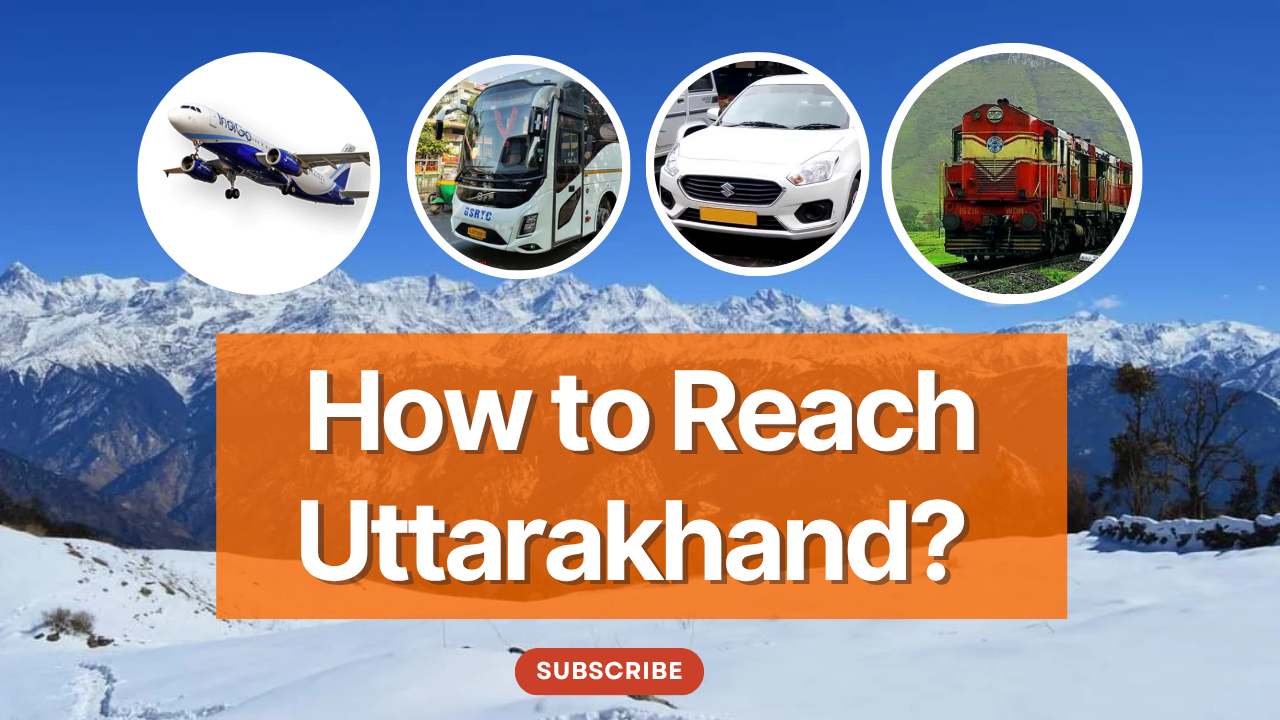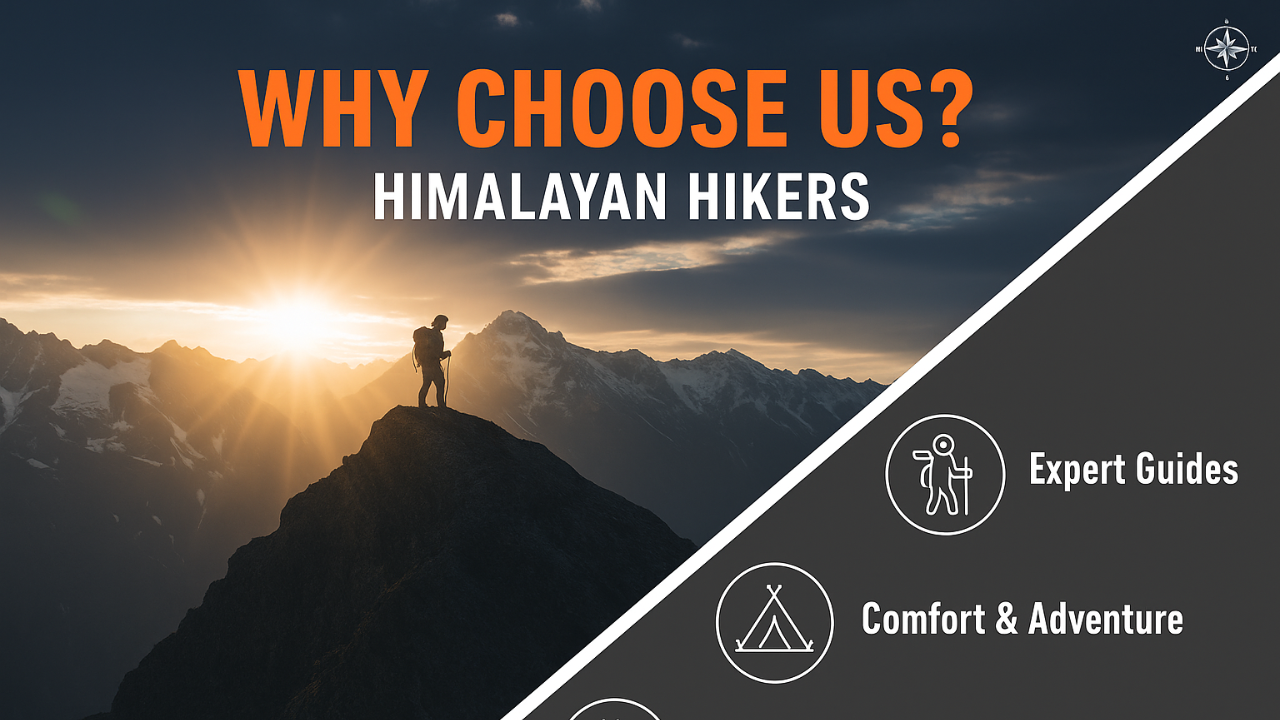Lord Shiva, on the other hand, was deeply affected by the bloodshed and refused to meet with the Pandavas. Lord Shiva hid in the Garhwal Himalayas in the form of a bull, and when he was caught by one of the Pandava brothers, the body of the bull submerged in the ground, only to later rapper in other forms, which is now popularly known as ‘Panch Kedar.’
The trek starts from Sagar Village, which is approximately 3 km away from Gopeshwar. The return route of this trek goes through the Anusuya Devi Temple. Rudranath should not be mistaken as any easy trek, hikers not accustomed to long journeys and altitudes might face some problems, hence it is generally advisable that trekkers practice a reasonable amount of physical fitness.
Some of the Trek Highlights
Before the trek starts, trekkers are subjected to beautiful vistas en route with stunning temples every few kilometers clearly stamping that yes, trekkers are indeed at the “Land of Gods, Uttarakhand”.
The trek officially begins in Sagar village and takes in a number of campsites along the way. The majestic meadows of Pun Bugyal and Punar Bugyal, with the Himalayan Mountains as a backdrop, are the closest thing to pure bliss. The trail to Rudranath is also covered in rhododendrons and changes in Himalayan vegetation after every few kilometers.
Devotees would chant and celebrate the trail for the duration of the journey. The reverberation of “Har Har Mahadev” imbues you with a powerful spiritual presence.
The final reach of Rudranath is enough to overwhelm devotees with the chants of “Mahadev”. The temple is covered in long ribbons of marigold garlands, long happy queues of devotees and the calmness of the Rudranath, everything about this place will capture you in its essence.
Things to look out for-
- Souviners from Rishikesh are great for memories.
- There are countless photogenic vistas, so we recommend that you prepare yourself for any aesthetic shoots. The best pictures are those taken under a blue sky with snow-covered peaks in the background.
- Explore the tranquility of this holy site and submerge yourself in “Neelkanth Mahadev” blessings.
- The route goes through a ‘Pitradhar’ ridge where trekkers can look out for awe-inspiring views of Chaukhamba peaks and Kedarnath.
The altitude covered in Rudranath Trek
- Rishikesh-340m
- Sagar village-1568m
- Pung Bugyal-2258m
- Rudranath-3600m
Views along the journey
Rishikesh to Sagar village- Beautiful routes covered in Himalayan vegetation, Temple dedicated to Sagar in Sagar village.
Sagar village to Punar Bugyal-Pun bugyal after the 2hr journey from Sagar village before reaching Punar Bugyal is beautiful grassland with hills covered in green pastures and strong confluences of distant mountains. Pitradhar ridge lying En route provides a spectacular view of Chaukhamba Peaks.
Nearby places to visit in Rudranath Trek
Visit the famous sagar temple in the Sagar village, the village is a great exploration point for a start and end stop of a trek.
While returning from the temple trekkers can opt for trek via Anusuya Devi temple to Mandal further from where teams can either walk or take a cab to Sagar Village. The temple of Anusuya Devi is dedicated to goddess Sati. Sati was believed to be the wife of Atri Muni, one of the great sages from Saptarishi.
Is it safe
Set amidst the high altitude ranges, concerns regarding Rudranath Trek safety are undeniably very valid questions. Yes the trek to Rudranath is indeed very safe and reliable, trails and much clearer safety protocols are sure to ease anyone’s concern.
Rudranath Trek Guide
Day 01- Pick up to you from Dehradun to Sagar village by tempo traveler (10/11 hours) over night stay hotel/ Home stay
Day 02- Trek – from to Sagar village to pung bugyal (6 km) (4/5 hours) (7138 eet) Over night stay In Cmap
Day 03- Trek from Pung Bugyal to panner bugyal (6 km) over night stay Camp
Day 04 –Trek from Panner bugyal to Rudarnath (07 km) (5/6hrs) (7569 feet) overnight stay Camp
Day 05 – Trek from from Rudarnath to Pung Bugyal (13 km) (6/7 hours hours) over night stay Camp
Day 06– Trek from pung bugyal to Sagar village (6 km) (4/5 Hours) over night stay Camp
Day 07- Trek from Sagar Village to Rishikesh / Dehradun (9/10 Hours)
Note: – Our service will remain from Rishikesh to Rishikesh – for more details please check includes or excludes
Day 01- Pick up to you from Dehradun to Sagar village by tempo traveler (10/11 hours) over night stay hotel/ Home stay
Day 02- Trek – from to Sagar village to pung bugyal (6 km) (4/5 hours) (7138 eet) Over night stay In Cmap
Day 03- Trek from Pung Bugyal to panner bugyal (6 km) over night stay Camp
Day 04 –Trek from Panner bugyal to Rudarnath (07 km) (5/6hrs) (7569 feet) overnight stay Camp
Day 05 – Trek from from Rudarnath to Pung Bugyal (13 km) (6/7 hours hours) over night stay Camp
Day 06– Trek from pung bugyal to Sagar village (6 km) (4/5 Hours) over night stay Camp
Day 07- Trek from Sagar Village to Rishikesh / Dehradun (9/10 Hours)
Because the top is relatively high in elevation for any beginner level trekkers we strongly recommend a reasonable level of physical fitness. We advise trekkers to physically and mentally prepare themselves prior to this trek.
Any medical assistance that is required will be provided at any point of the journey; however, trekkers must consult their professional care before beginning any trek. We also strongly advise trekkers to learn about altitude sickness and to notify our teams as soon as any symptoms appear.
Weather conditions depend on the time of the year trekkers are travelling. In the months leading up to and following the monsoon season, the daytime temperatures are moderate, but the nighttime temperatures are significantly lower. Monsoons receive moderate to heavy rainfall.
Rudranath temple is best visited during the months of May to November. Devotees and trekkers can enjoy the mild temperatures of these months. The unfavorable temperatures and precipitation make this trek a pre and post monsoon season trek. Temperatures typically range from 13 to 17 degrees Celsius during the day, with substantially colder nights.
If you are travelling from any metropolitan city in India or from outside India, getting to the capital city of Delhi may be the first and most important step. All major modes of transportation, such as air, road, and rail, can take you to Delhi.
Rishikesh is connected to most major cities in India via all chief modes of transportation. Trekkers could perhaps conduct extensive research for their direct mode of transportation to ensure a much smoother arrival.
How to reach Rishikesh from Delhi
By air– Jolly Grant Airport is the nearest airport to Rishikesh. It is well connected to Delhi and many chief cities with daily flights.
By road-Delhi has direct road routes to Rishikesh. Trekkers will have to book either a bus or private cabs. Prior booking for cabs and buses are easily available at various sites.
Delhi> Rishikesh >Sagar village
By railway– Nearest Railway station to Rishikesh will be Rishikesh Railway station. Since Rishikesh is connected to all major railway routes, trekkers can opt for a direct route or via Delhi. They can also opt for direct trains to Dehradun or Haridwar and then take a cab or bus to Rishikesh.
Some important points to note-
- Please note that we don’t provide timings schedules for transportation before Rishikesh. Subjected to various conditions the scheduled timings and availability of particular rides may differ. We recommend trekkers to reach out to our teams for any queries. You can drop an email or call us for an initial guided session.
- Our teams will be collecting trekkers at fixed points of airports, railway stations and bus stands. It is recommended that unless any delay arrives, trekkers are advised to reach the destinations at least 2 hours prior.

Mandatory Documents
Original and photocopy of government photo identity card- (Aadhar Card, Driving License, Voters ID, etc,)
Passport and Visa important to foreigners
Medical Certificate (First part should be filled by the Doctor and Second part by the Trekker)
Declaration Certificates
Note: – Many trekkers commit the same mistake of carrying unnecessary items on a trek which only makes the backpack heavy. It is important to know the right items to carry. It differs from season to season if you are trekking in summers then carry less layers of warm clothing and if you are trekking in winters carry enough layers to protect yourself against chilly cold.
Necessary Items for trekkers

Basic Trekking Gears

The Clothes You Should Bring On Satopanth Expedition

Head Gears

Foot Gears

Personal Care Essentials

Carry a Personal Medical Kit


Are you Looking for Trekking Equipment on Rent?
If any trekker requires trekking equipment on rent, Himalayan Hikers offers the best-quality gear available for rental. Many individuals are in need of such equipment, and renting provides a cost-effective solution, allowing them to access high-quality gear at an affordable price without the need for a significant investment for short-term use.

Trek Equipment You can book directly on first day at the Base Camp.
Note:-
Please take all medicines only when prescribed by the doctor. In case you face any problem during your trek,
discuss and take advice from the Professional guide.
The Trek is one of the most popular treks in Uttarakhand, requiring both physical preparation and mental readiness. Although it is categorized as a moderate trek, reaches an elevation of over 12,720 feet and traverses remote Himalayan terrain, which can be physically and mentally challenging. Here's how you can prepare yourself for a safe and successful accomplishment of the Trek:
Physical Fitness
Building a good fitness base is essential for every trekker. The Trek itinerary involves 5 to 6 hours of walking every day. Though the trails are well-marked, they are often bumpy and include steep uphill sections, which may affect your stamina. You can overcome your physical limitation with a 6-week training program that you can begin about 2 months before your Trek. Your 6-week fitness routine should include

Pro Tip: If you have time, you can skip the Sunday training and go for a long-distance walk or mini day-hike (7–10 km) with a loaded backpack to simulate real trekking conditions. A short 1-day hike around your city/town can help a lot.
Mental Preparation
Physical strength is only half the journey, the other half is mental resilience. The trail takes you through remote clearings, steep climbs, cold starry nights, and no mobile connectivity. Be prepared to:
(I) -
Detach from the digital world.
(II) -
Embrace basic mountain living (camping, toilet tents, limited electricity).
(III) -
Push through moments of fatigue, weather discomfort, or altitude effects.
Himalayan Hikers is a reputable trekking company that places a high priority on safety. Here are some of the safety measures they take to ensure the safety of their clients during the Trek:
Experienced Guides: Himalayan Hikers hires experienced and certified guides who are well-versed in the terrain, weather conditions, and local culture. These guides have first-hand knowledge of the routes and are equipped to handle any emergency situations that may arise.
Proper Gear: The company provides all the necessary gear and equipment to their clients to ensure comfort and safety during the trek.
Hygiene and Sanitation: Himalayan Hikers places great emphasis on hygiene and sanitation during the Trek. They provide clean drinking water, hand sanitizers, and toilet tents to ensure that their clients are healthy and comfortable.
Emergency Services: The company has a well-defined protocol for handling emergency situations. They have a team of trained medical professionals who are available 24/7 and can be quickly mobilized in case of an emergency.
Acclimatization: Himalayan Hikers follows a gradual acclimatization process during treks to ensure that their clients adjust to the high altitude gradually. They also monitor the health of their clients regularly and provide necessary medical attention if required.
Overall, Himalayan Hikers places a great emphasis on safety and takes all necessary measures to ensure the safety and well-being of their clients during treks.
No FAQs available for this trek.





